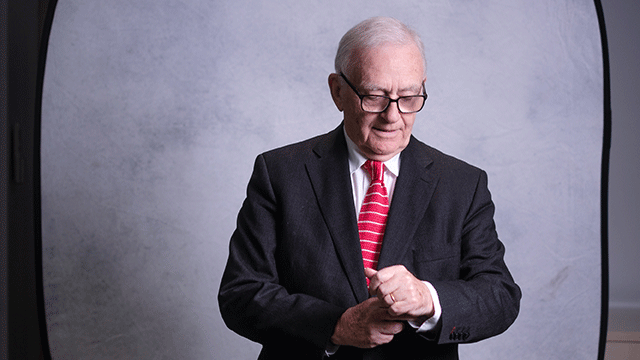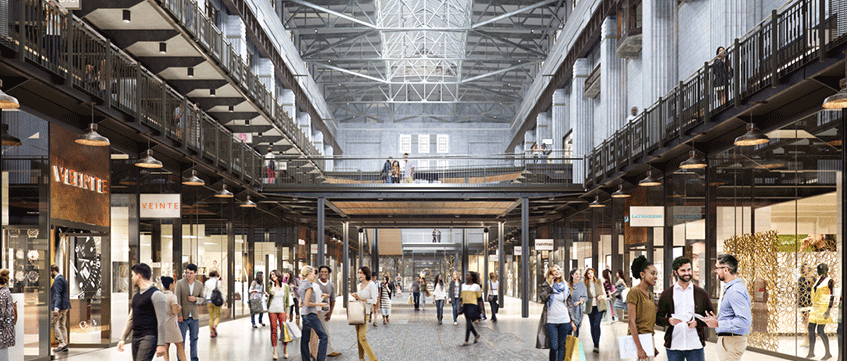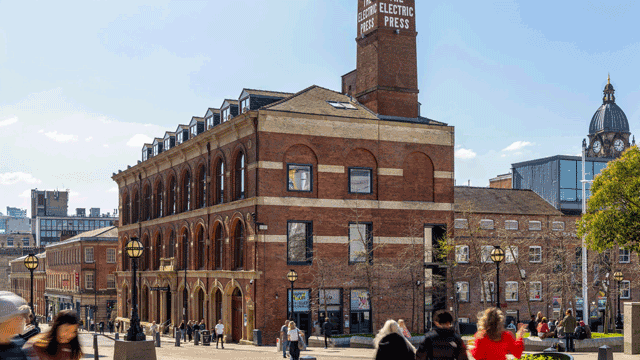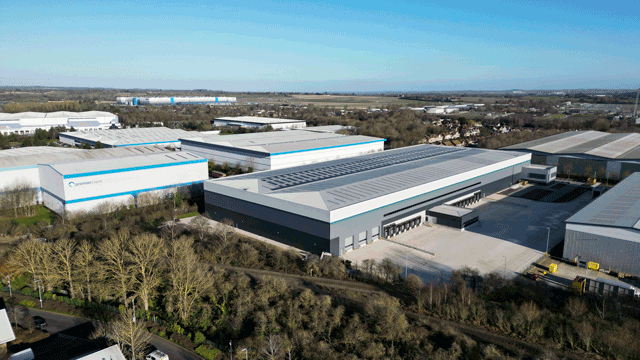Eyes down, ladies and gentlemen, the dice are about to roll. The prize is to see which casino company, and which site, will be the first to provide Glasgow’s own mini-Las Vegas. Since the government announced the deregulation of gambling two years ago, the city has been besieged by US and UK operators.
Companies have been spurred on by the hope that the bill will lift restrictions on the number and size of casinos, presently limited to a 12,000 sq ft baseline, although some larger casinos are poised to go through. Only 134 casinos have opened in the UK over the past 30 years.
Six sites in Glasgow have been identified as suitable, and most of them already have major developers and operators associated with them. Chief among them are David Murray’s Ibrox scheme, and Peel Holdings’ Glasgow Harbour development (see below).
Culture secretary
Although the Gambling Bill passed its second reading in parliament last month, culture secretary Tessa Jowell has since stated that the number of mega-casinos in England, Wales and Scotland will be limited to eight initially. So nobody is suggesting that each of the six sites in Glasgow will house a casino.
But commentators are asking questions about what impact a mega-casino could have on the city, and about what will happen to those sites that do not secure a casino.
It is Glaswegians’ apparent love of gambling that has made the city a target for big companies. The city’s five casinos and crop of bingo halls have all been successful. Add to this a population of 750,000, an abundance of large development plots and potential regeneration sites, and large casino operators are falling over themselves to get a foothold.
As DTZ’s Andrew Kennedy, who is representing Gala Casinos, puts it: “Glasgow is viewed as an excellent city for casino development based on the size of its core catchment and demographics. Not all UK cities can easily accommodate these requirements because of land availability and values generated by alternative uses.”
Each proposed scheme is putting forward reasons why it should get the go-ahead, and one of the key issues mentioned is the regeneration of a rundown area. At Ibrox, home of Rangers Football Club and one of the leading contenders for a casino, Murray is promising jobs, housing and enhanced leisure facilities in what would be essentially a Rangers FC village.
A big disadvantage could be the casino’s position, and there is debate in the city over whether die-hard Celtic fans would go near the scheme. “Some Celtic fans wouldn’t be seen dead enjoying themselves at Ibrox,” says Donaldsons’ retail partner, John Menzies.
However, Alan Creevy, a director at Creevy LLH, says the Ibrox location is a positive factor. “Its position near the airport and main roads will mean people will be coming in by plane or train. It’s so accessible.” And Glasgow council seems happy with the proposal, and particularly the regeneration planned. “Regeneration of the area around Ibrox is very, very welcome,” says a council spokesman.
Planning permission
Peel Holding is using the promise of mixed-use including residential to bolster its proposal for a casino at Glasgow Harbour. The developer has already been granted outline planning permission for up to 400,000 sq ft of retail and leisure. Now it is adding offices, 2,500 homes, and an 11-acre public park to the scheme. Menzies calls the project “one of the key battlegrounds” in the casino war.
The Scottish Exhibition & Conference Centre is another hot contender. The proposed £162m scheme, which would be operated by resort company Kerzner International, has full planning permission.
So what will happen to those sites that do not achieve their casino goals? Creevy knocks plans for the only city-centre scheme proposed, at the former Odeon site on Renfield Street. The Duddingston House Properties’ site is being touted for a 25,000 sq ft casino. “It’s not quite what these big players are looking for,” says Creevy. “They want massive out-of-town sites.”
Not surprisingly Menzies, who is agent on the scheme, says the site “has the strongest pull because it’s right in the heart of the city centre”.
Either way, the Odeon is still in the right position for another type of leisure operator to move in. David Thomson, partner at RLF, formerly Robinson Low Francis, is a firm believer that, for sites that do not end up accommodating casinos, “another scheme will pop up”. He adds: “Most of these schemes are mixed-use developments anyway, so if it isn’t a casino there will probably be more residential. Mostly it is a win-win situation for the developers.”
In preparation for the possible opening of a mega-casino, Gala – which operates three of the city centre’s existing five casinos – is making plans to develop its own mega-casino. Kennedy says the company, in a joint venture with Harrah’s Entertainment, has “found somewhere for a large casino, and there is an agreement in principle”. However, he denies that it is any of the six sites that developers and operators have identified.
The debate over which site, if any, will be finally chosen could be quickly settled depending on the final outcome of the government’s Gambling Bill. Meanwhile, Glasgow council says it is waiting on a report from the chief executive, due out in December or early January, which will summarise the benefits and disadvantages of more casinos in the city. Until then GlasVegas will remain a developers’ dream.
|
|
|
Glasgow Harbour. Peel plans a £100m, 300,000 sq ft mixed-use scheme, north of the River Clyde. It would include a casino, operated by MGM Mirage, a hotel, cinema, bars and restaurants. Planning permission has not yet been sought. Ibrox. David Murray proposes a £131m regeneration at Edmiston Drive, south-west of the city. It would include a casino, operated by Las Vegas Sands, housing, nine restaurants, bars, a luxury hotel and a conference centre. Outline and full planning applications have been submitted, and if consent is obtained, work will start in 2006. St Enoch’s East: Stannifer and Miller propose a £150m mixed-use extension to the St Enoch Centre on a large surface car park in the city centre. Along with a 140,000 sq ft casino, the development would include 200,000 sq ft of shops, a department store, a hotel, 300 flats and 1,500 car parking spaces. The developers are said to be talking to Selfridges about anchoring the scheme. Planning permission has not yet been sought. Odeon: Duddingston House Properties proposes a 105,000 sq ft, five-storey casino at Renfield Street. The developer hopes to include retail on the ground floor and a rooftop restaurant. The site has been granted permission for redevelopment, but not yet for a casino. Scottish Exhibition & Conference Centre: As phase II of the Queens Dock development, the SECC propose a £162m casino, with 1,250 slot machines, to be operated by Kerzner International. Outline planning permission has been granted for the entire scheme. Springfield Quay: Heron proposes a casino between 70,000 sq ft and 80,000 sq ft alongside existing leisure facilities on the south side of the River Clyde. The casino would be operated by London Clubs International under its Rendezvous banner. Outline consent has been granted for the redevelopment. Other sites being linked to casinos are: city-centre lap dancing venue the Truffle Club, and Braehead – on the outskirts beside X-leisure’s £40m Xscape leisure complex. |
|
|
|
Five years ago, all the talk in Glasgow’s leisure market was about the big operators looking for huge city-centre sites. That has all changed, and it is now independent operators that are driving the market, and looking for much smaller floorplates. “There are requirements from La Tasca and pub company Barracuda, and the Living Room came in a few months ago,” says Alan Creevy, director at Creevy LLH. “But compared with five years ago, these requirements have fallen dramatically. The private sector is now a more dominant force. It’s a symptom of what is happening up and down Britain’s high streets.” Between the peak years of 1998 to 2000, average required floorplates nationally were 10,000 sq ft. Today, that has shrunk to around 3,000 sq ft. Creevy is acting for two large companies, which he refuses to identify, that have 20 years-plus left on their leases and could possibly be sublets. He does not believe landlords will have a problem with covenant in the shift from corporates to independents. “Landlords want healthy businesses, and what they have to accept is that there are now a number of sublets from a number of plcs on the market.” John Menzies, partner at Donaldsons in Glasgow, agrees that the independents are having their day. But he says he sees a change in the market, thanks to the proposed 50,000 sq ft Xscape at Braehead. X-leisure’s £40m scheme has just started construction and is set to open in March 2006 (p102). “Going on what we are doing at the Odeon on Renfield Street, we are finding that some of the demand is coming from restaurants and bars that are also taking space in Xscape.” Menzies, who is agent on the 105,000 sq ft Odeon, which is being broken down into smaller floorplates, believes it is only logical that operators would want something both in and out of town. Restaurants Nando’s and Ma Potter are two of the names linked to both Xscape and the Odeon. Agents are hoping the return of the big operators will help push rents up from the £23 per sq ft level they have been at for the past three years. |










